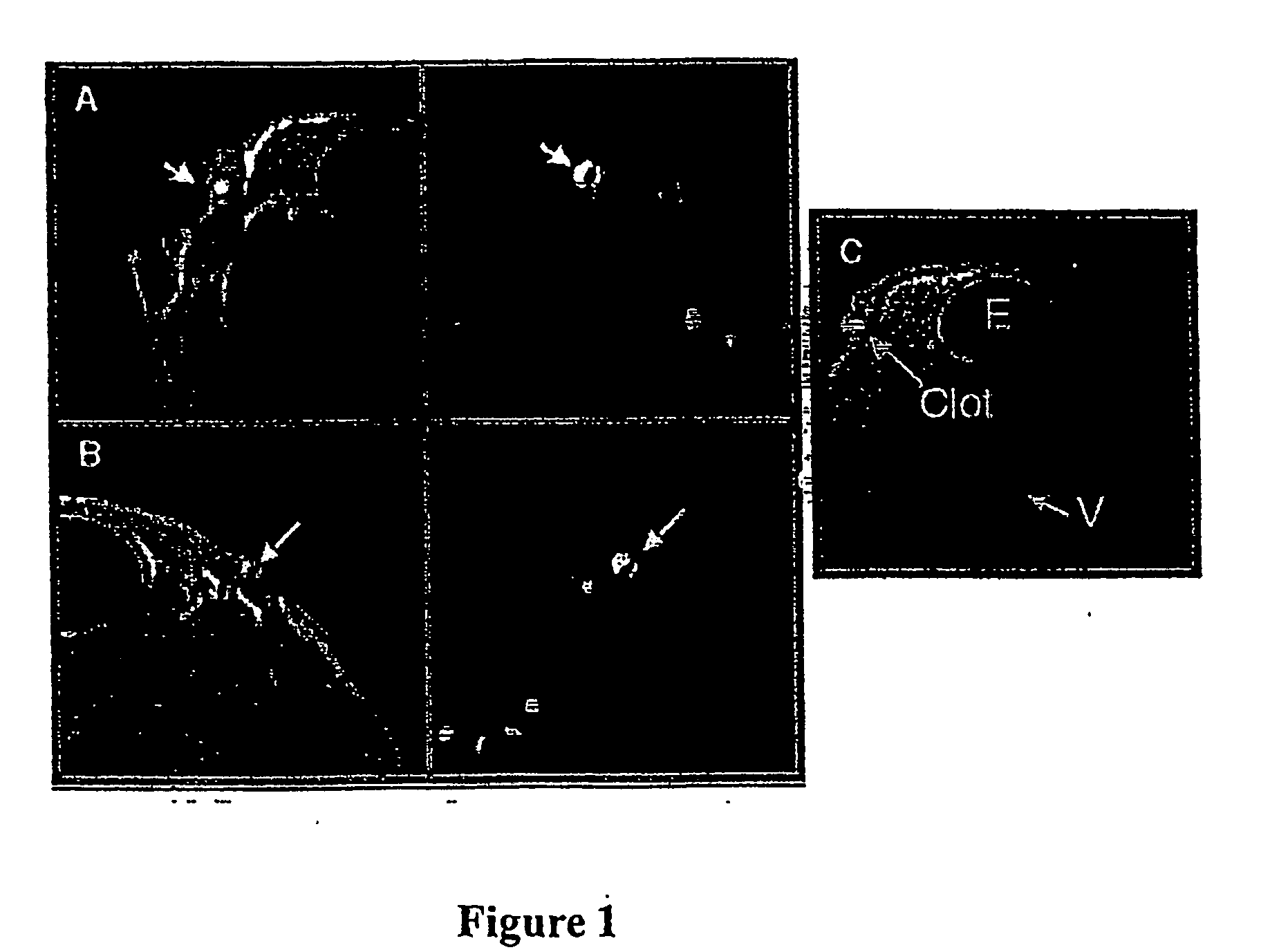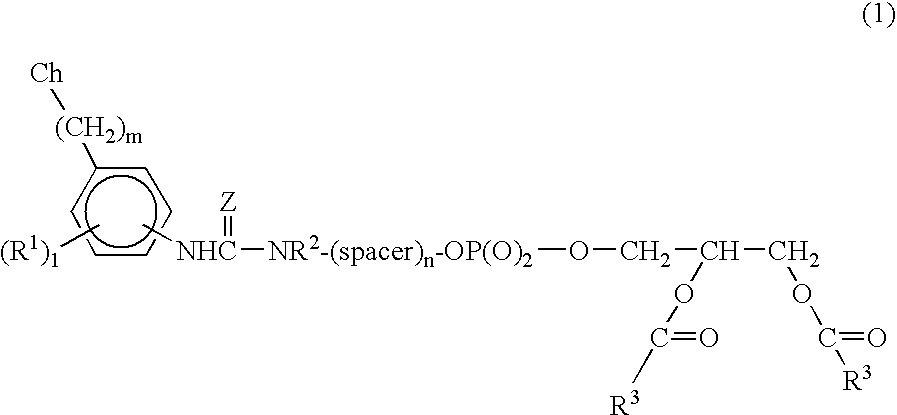Blood Clot-Targeted Nanoparticles
a nanoparticle and blood clot technology, applied in the field of blood clot-targeted nanoparticles, can solve the problems of inconvenient drug delivery or delivery of imaging agents or nuclides, inapplicability of methods described in this article, and long incubation with nanoparticles, so as to prevent stroke
- Summary
- Abstract
- Description
- Claims
- Application Information
AI Technical Summary
Benefits of technology
Problems solved by technology
Method used
Image
Examples
example 1
Preparation of Nanoparticles-1
[0052]Nanoparticles are prepared that comprise perfluorooctylbromide (40% w / v, PFOB), a surfactant co-mixture (2.0%, w / v) and glycerin (1.7%, w / v) and optionally an “oil” (2 to 10% w / v, substituted for the PFOB).
[0053]For various applications, the surfactant co-mixture includes therapeutic agents, dipalmitoylphosphatidyl choline, cholesterol, phosphoethanolamine-N-4 PEG(2000)-(p-maleimidophenyl)butyramide (MPB-PEG-PE) or phosphoethanolamine-(p-maleimidophenyl)butyramide, phosphatidylethanolamine, and sphingomyelin in varying molar ratios, which are dissolved in chloroform / methanol, evaporated under reduced pressure, dried in a 50° C. vacuum oven overnight and dispersed into water. For paramagnetic formulations, the surfactant co-mixture includes varying amounts of gadolinium lipophilic chelates such as gadolinium 1,4,7,10-tetraazacyclododecane-tetraacetic acid coupled to phosphatidylethanolamine through a methoxyphenyl-containing linkage (Gd-Meo-DOTA) a...
example 2
Preparation of Nanoparticles-2
[0059]In this example, a chelating ligand and a targeting ligand are coupled to the nanoparticles prior to emulsification.
[0060]The nanoparticulate emulsions in this example are comprised of 20% (w / v) fluorochemical, 2% (w / v) of a surfactant co-mixture, 1.7% (w / v) glycerin and water representing the balance. The surfactant of control, i.e., non-targeted, nanoemulsions, includes 70 mole % lecithin (Avanti Polar Lipids, Inc.), 28 mole % cholesterol (Sigma Chemical Co.), 2 mole % dipalmitoyl-phosphatidylethanolamine (DPPE) (Avanti Polar Lipids, Inc.). Fibrin-targeted nanoparticles are prepared with a surfactant co-mixture that includes: 70 mole % lecithin, 0.05 mole % N-[{w-[4-(p-maleimidophenyl)butanoyl]amino}poly(ethylene glycol)2000]1,2-distearoyl-sn-glycero-3-phosphoethanolamine (MPB-PEG-DSPE) covalently coupled to the anti-fibrin peptide such as an antibody fragment or peptidomimetic, 28 mole % cholesterol, and 1.95 mole % DPPE. The components for eac...
example 3
Preparation of Nanoparticles-3
[0062]In this example, the ligands for imaging and targeting are coupled to the nanoparticles after emulsification.
[0063]The nanoparticulate emulsions in this example are comprised of 20% fluorocarbon, 2% (w / v) of a surfactant co-mixture, 1.7% (w / v) glycerin and water representing the balance. The surfactant of control, i.e., non-targeted, emulsions included 70 mole % lecithin (Avanti Polar Lipids, Inc.), 28 mole % cholesterol (Sigma Chemical Co.), 2 mole % dipalmitoyl-phosphatidylethanolamine (DPPE) (Avanti Polar Lipids, Inc.). Targeted nanoparticles are prepared with a surfactant co-mixture that includes: 70 mole % lecithin, 0.05 mole % N-[{w-[4-(p-maleimidophenyl)butanoyl]amino}poly(ethylene glycol)2000]1,2-distearoyl-sn-glycero-3-phosphoethanolamine (MPB-PEG-DSPE), 28 mole % cholesterol, and 1.95 mole % DPPE. The components for each nanoparticle formulation are emulsified in a M110S Microfluidics emulsifier (Microfluidics) at 20,000 PSI for four min...
PUM
| Property | Measurement | Unit |
|---|---|---|
| Boiling point | aaaaa | aaaaa |
| Paramagnetism | aaaaa | aaaaa |
Abstract
Description
Claims
Application Information
 Login to View More
Login to View More - R&D
- Intellectual Property
- Life Sciences
- Materials
- Tech Scout
- Unparalleled Data Quality
- Higher Quality Content
- 60% Fewer Hallucinations
Browse by: Latest US Patents, China's latest patents, Technical Efficacy Thesaurus, Application Domain, Technology Topic, Popular Technical Reports.
© 2025 PatSnap. All rights reserved.Legal|Privacy policy|Modern Slavery Act Transparency Statement|Sitemap|About US| Contact US: help@patsnap.com



